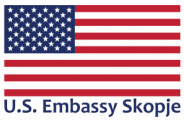Kremlin performed a well organized information operation related to the Bucha massacre. A coordinated and sustained effort by Russian officials and proxies to deny and cover-up the Bucha massacre was recorded. The entire operation was performed in a period of 10 days, in three waves, with the first wave – the statement of Russian MFA spokeswoman Maria Zakharova for the national channel Rossiya 1 being the most amplified in the Macedonian online space.
The Bucha Massacre raised a heated international debate. Russian officials and proxies had numerous reactions recorded over a period of 10 days which were broadcasted in the Macedonian online space. On 3 April 2022, Russian MFA spokeswoman Maria Zakharova gave an interview for the national channel Rossiya 1, where she talked about the Bucha massacre. On 4 April 2022 Lavrov also commented the Bucha massacre. On 5 April, the portal think.mk published an article which contains a video they claimed it was sent by their “reader” and titled the article “The proof that the Bucha massacre is staged?” On 6 April, the FB page Sekula Vojvoda Fan Club published the video from Russian MFA Lavrov speech (4 April). On 12 April 2022, the Russian Embassy in North Macedonia published a video from a meeting between Putin and Lukashenko. At the official web-page of Kremlin, there is a statement of Lukashenko.
The Bucha massacre has been documented and verified by independent sources, as well as credible media outlets, by providing solid evidence (video) of killing civilians by the Russian armed forces, while they controlled the city. One of the most on-the-spot verifications and graphic illustrations of the scope of the massacre and the atrocities conducted by the Russian Armed Forces was done by the New York Times.
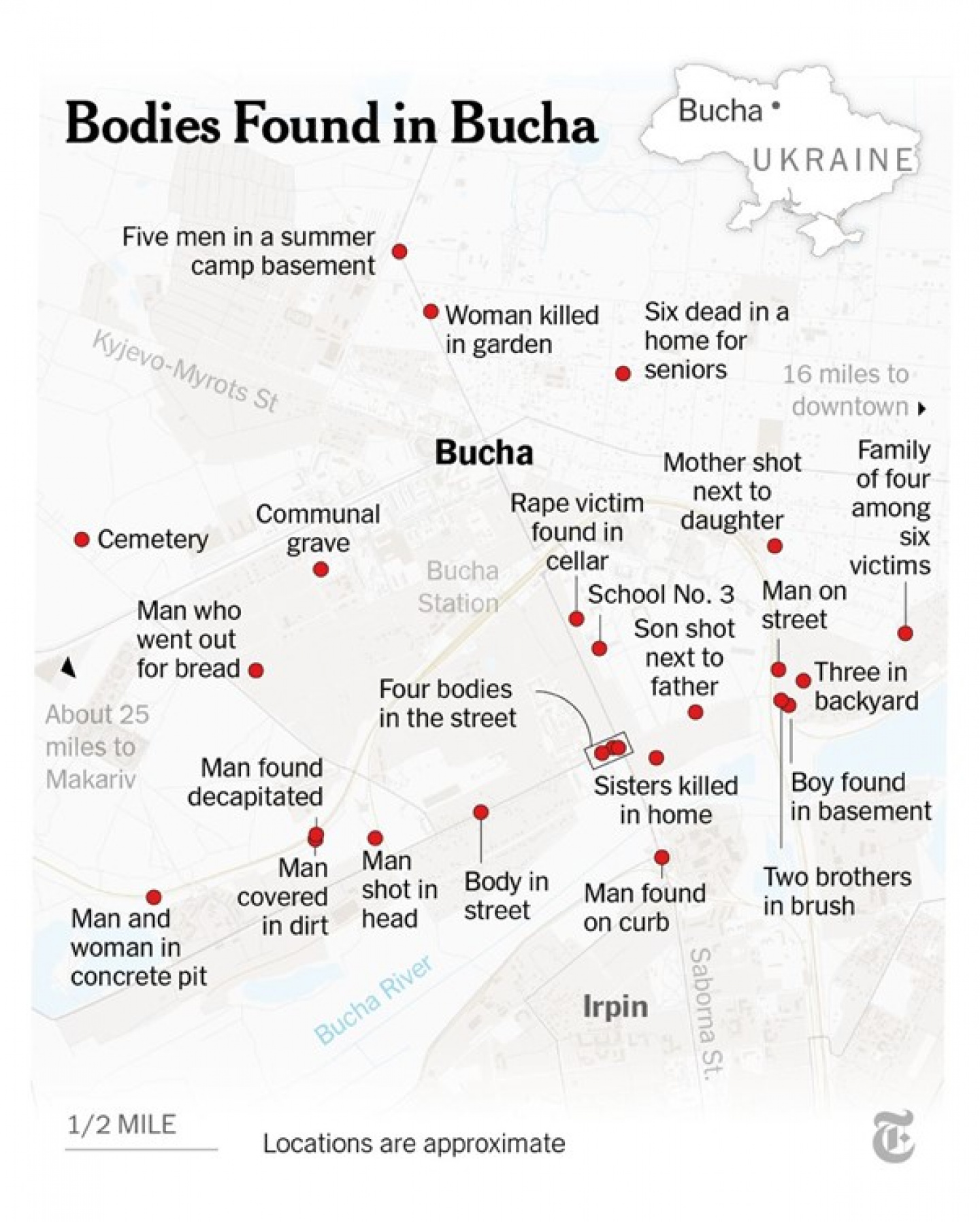
Further below we present the reactions and messages of the Russian top officials in a chronological order. The aim of this approach is to enable a periodical overview of the messages sent, the substance of the narrative promoted as well as the broadcast and the amplification of these messages and narratives by the local pro-Russian proxies.
Narrative: The Bucha massacre was staged in order to ruin the image of Russia; the West and the British are behind this operation.
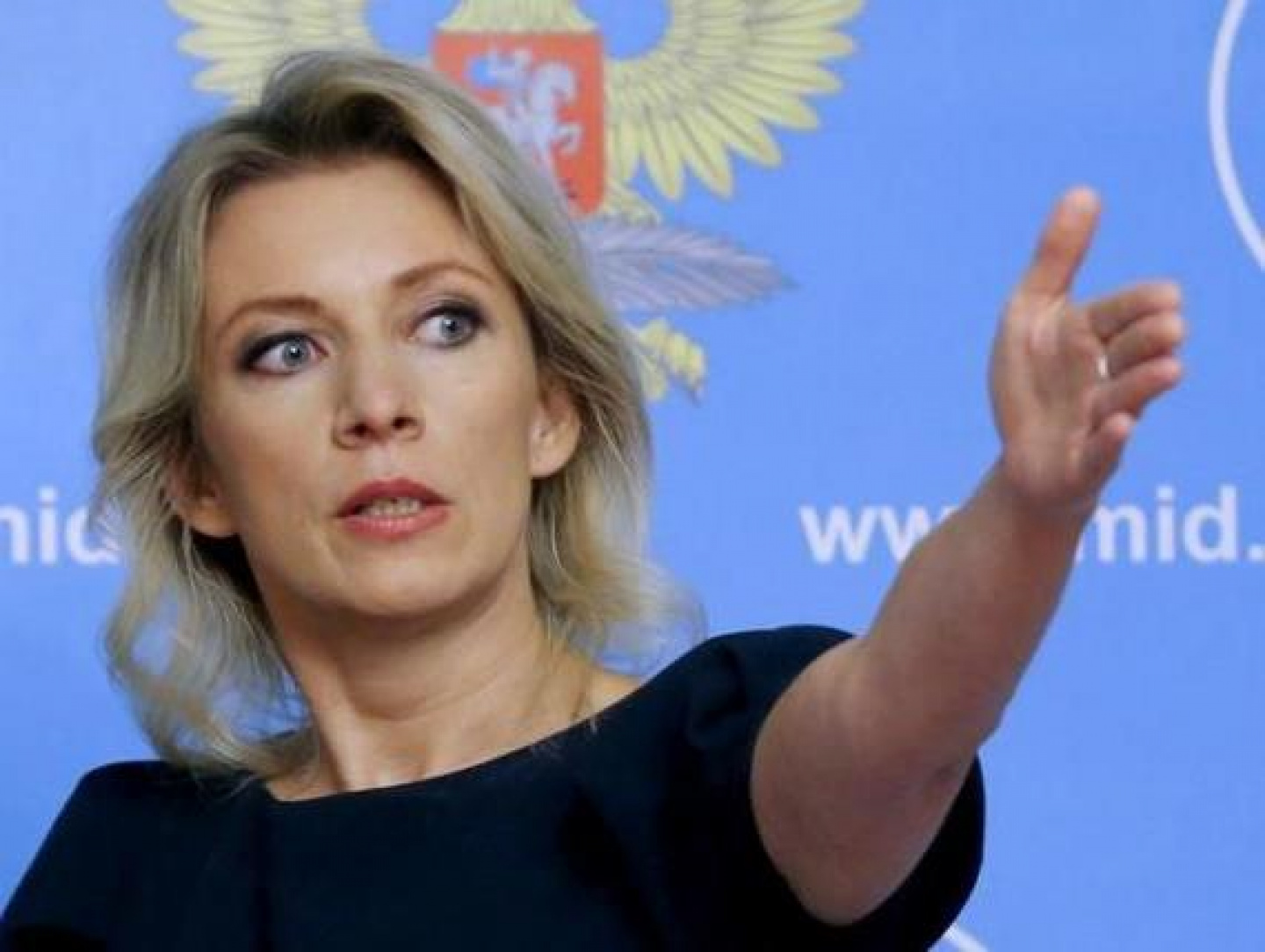
In an interview for the national channel Rossiya 1, Maria Zakharova talked about the Bucha massacre, condemning the U.S. and NATO for being “masters of provocation” and that the photos of the killed civilians are used from the West to ruin Russia’s reputation. Zakharova further underlined that “in this case, I am thinking that these statements (for Russia) were given in the very first minutes after the publishing of the materials, there is no doubt who ‘ordered’ this story”.
The parts of Zakharova’s statement were published in the Macedonian online space in the course of the next few days, from 4 to 7 April. A total of 22 portals published 23 articles that were posted 49 times on 44 unique FB pages & groups, with more than 2.7M followers and 3.7K FB interactions.

Russian MFA Lavrov stated that “the other day, another fake news attack was undertaken in the town of Bucha in the Kyiv Region, after the Russian military had left according to the plans and agreements. Several days later, a fake video was staged that is now being spread through all media channels and social media by the Ukrainian representatives and their Western patrons”. However, on 6 April, the FB page Sekula Vojvoda Fan Club published the video from his speech, which was shared 6 times on 6 FB pages, having in total more than 86K followers.
Think.mk published an article which contains a video, claiming that it was sent by their “reader” and titled the article “The proof that the Bucha massacre is staged? – The dead persons ‘resurrect’ after the camera is gone?”. After some time, the article was edited, with an opposite claim and titled “Video: The Bucha massacre is not staged – The dead persons did not resurrect after the camera was gone”. However, the first article with the disinformation was re-published by a portal, citing think.mk as a source.
Those 2 portals published 2 articles, which were shared 13 times on 12 unique FB pages/groups, having in total 331K followers and 508 FB interactions.
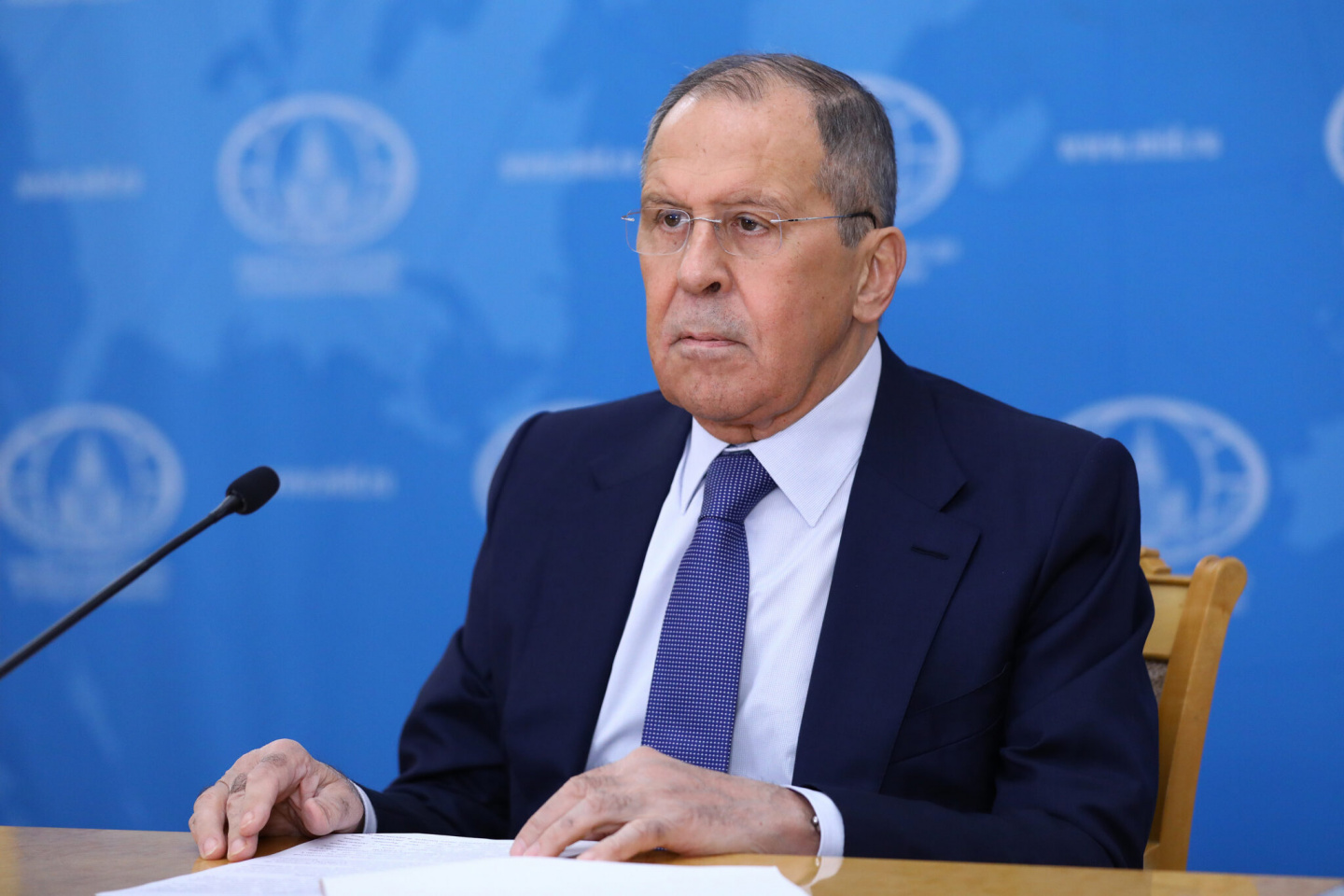
Sergey Lavrov’s second statement, where he is accusing Ukraine for sabotaging the talks with Russia, was also used for commenting and denying the Bucha massacre. On 5 and 6 April 2022, in the Macedonian online space, articles titled “Lavrov: The lies from Bucha are being used for sabotaging the talks with Russia” were published.
A total of 15 portals published 15 articles, which were shared 17 times on 17 unique FB pages/groups, having in total 1.1 million followers and 284 FB interactions.
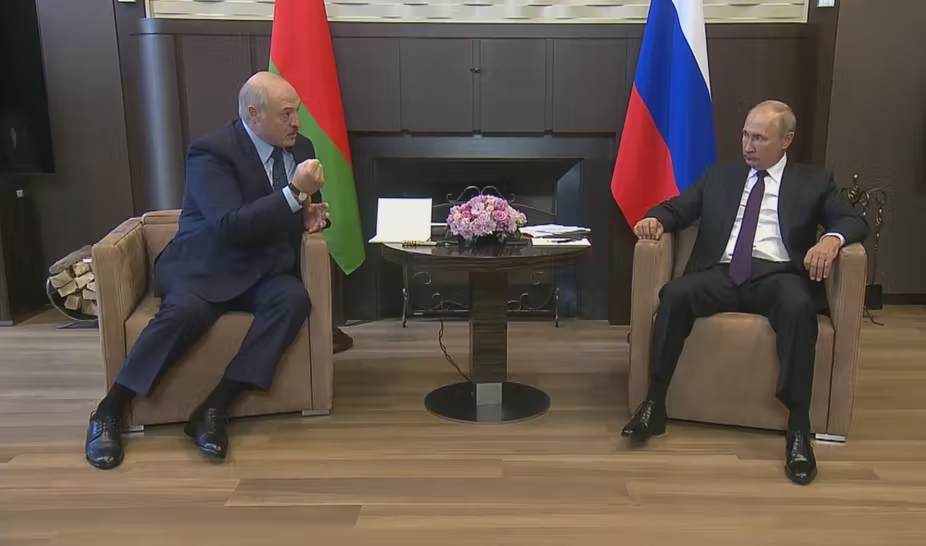
The Russian Embassy in North Macedonia, almost a week later, published a video from a meeting between Putin and Lukashenko. At the official web-page of Kremlin there is a transcript from the meeting, containing a statement of Lukashenko, where he claims that “it was necessary to introduce another package, we know this. Today we discussed in detail this special operation of theirs, a psychological operation carried out by the British. If any of you need addresses, passwords, turnouts, car numbers, their brands, on which they arrived in Bucha, and how they did it, the FSB of Russia can provide these materials”.
According to the available data, the statement of Lukashenko was published by 5 portals with 5 articles, shared 13 times on 12 unique FB pages/groups, having in total over 540K followers and 1,009 FB interactions.
At the chart below you will find the comparison per supportive narrative, since all of the above elaborated represents a supportive narrative to the strategic narrative that “the West staged the Bucha massacre to ruin the image of Russia”.
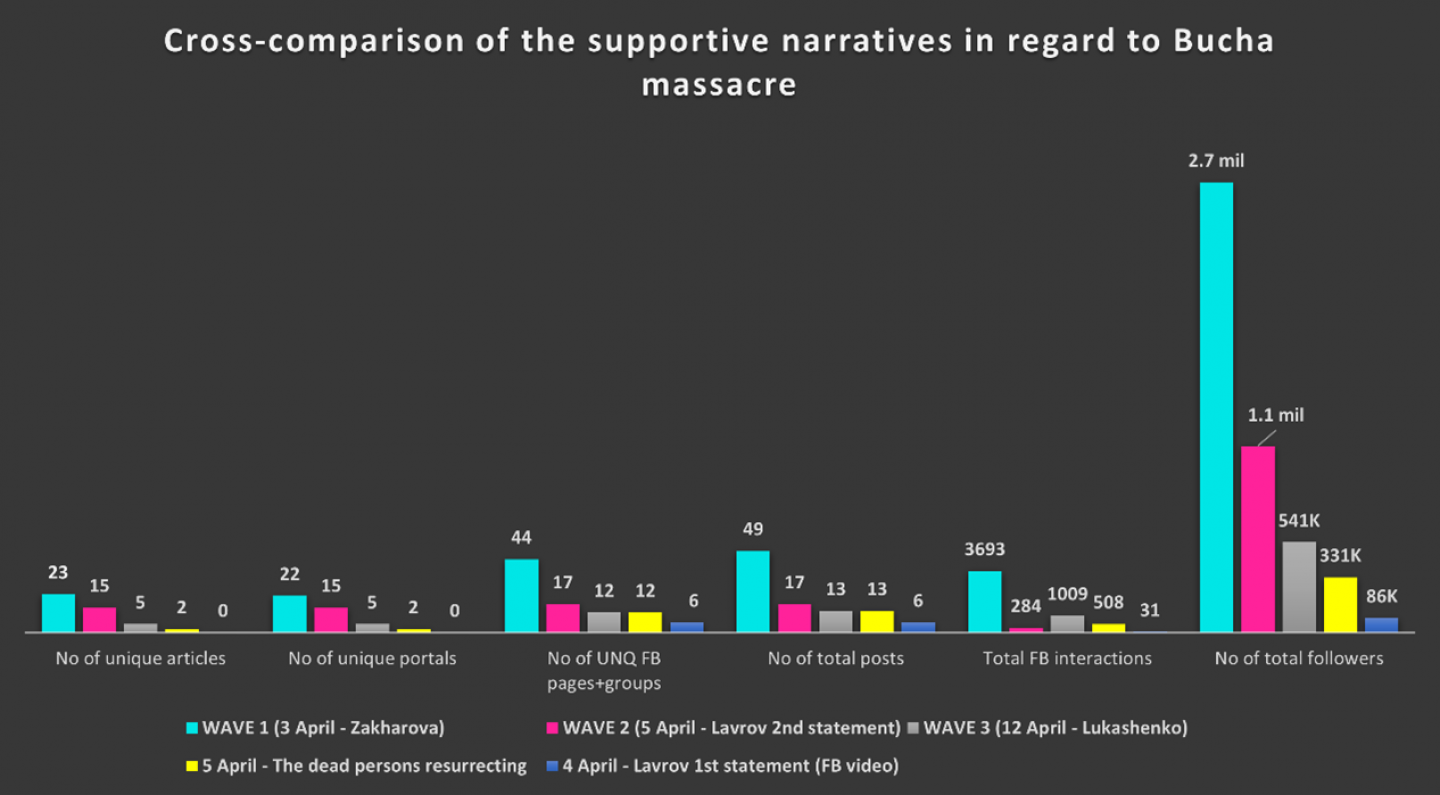
Based on the data, it appears that the messages from Zakharova that blamed the U.S. and NATO for being “masters of provocation” and that the photos of the killed civilians in Bucha were used by the West to ruin Russia’s reputation, got the biggest attention when compared to the other 3 issues, thus provoking the highest number of reactions and potentially reaching the highest number of audience.
Please find below the overall data of the narratives merged, based on unique articles, unique portals and unique FB pages/groups.
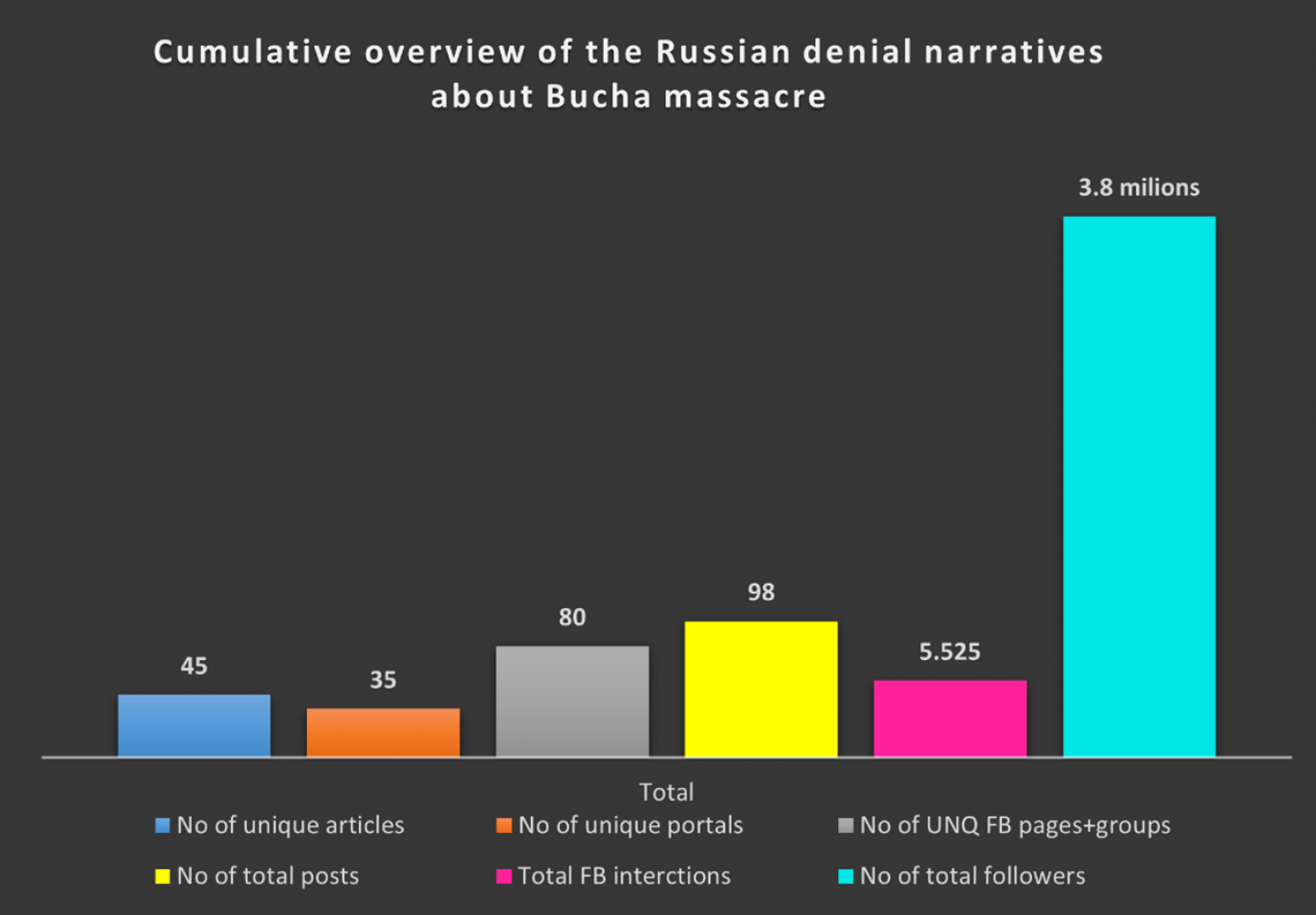
The entire denial operation by the Russian officials and their proxies was conducted in three waves within a period of 10 days. The data shows that the first wave of denial got the biggest push and amplification by the portals and the Facebook infrastructure, while the remaining 2 waves were only used to keep the narrative alive.
This analysis represents an example of how Kremlin, through its top oficials and well developed infrastructure implements information operations through which it make attempts to disinform the public and cover-up the facts.


